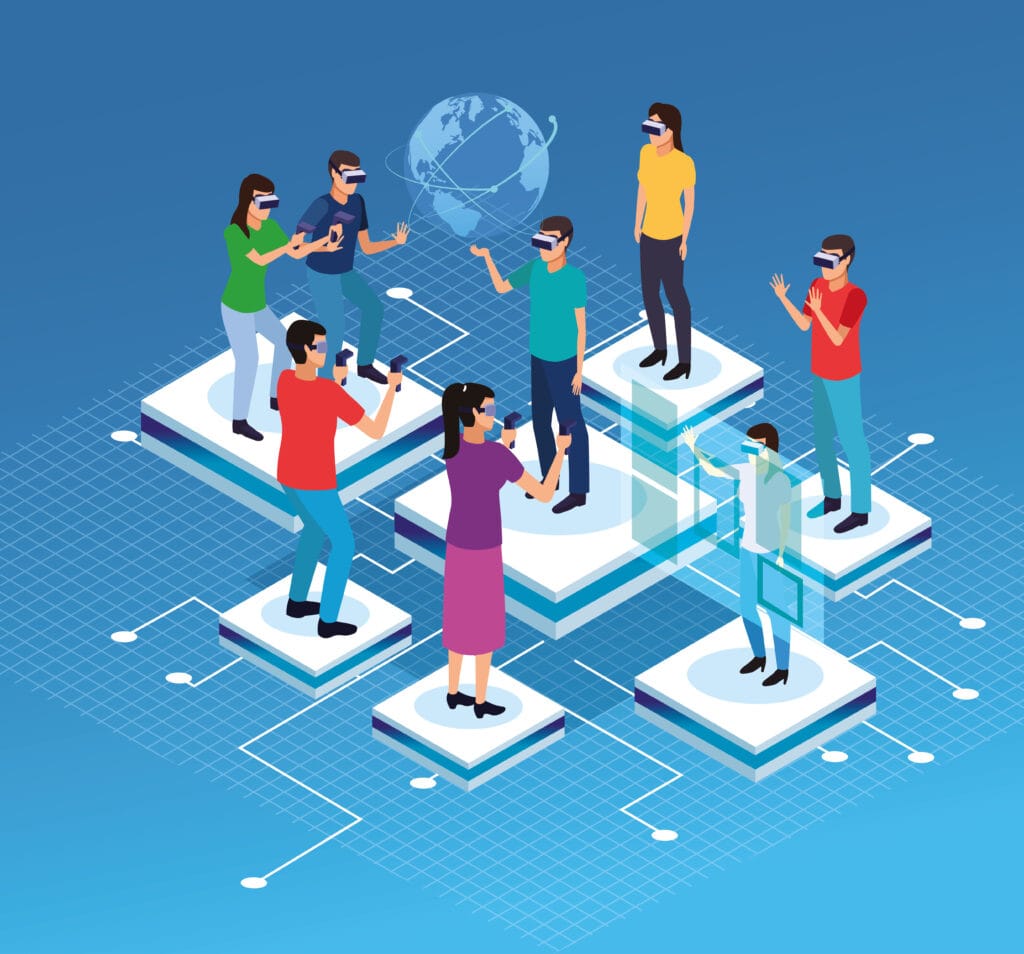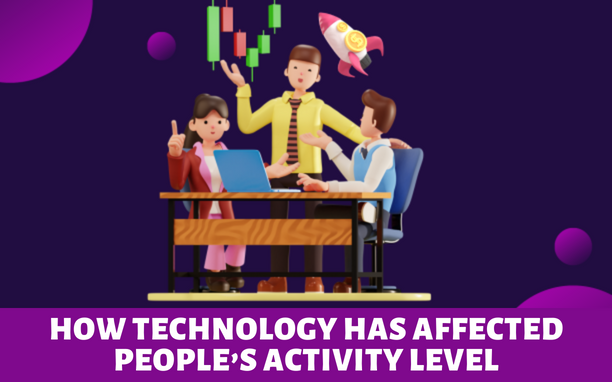The influence of technology on our everyday lives cannot be exaggerated at a time when technical breakthroughs predominate. The way we live, work and communicate has changed as a result of technology, which includes smartphones, smartwatches, and a variety of other smart gadgets. The amount of activity people engage in is one area where this impact is very noticeable. We’ll examine how technology has influenced people’s physical activity in this article, both favorably and badly, and how it has occasionally changed it.
Introduction

In the digital age of today, technology has made unprecedented inroads into the fabric of our lives. From cell phones to wellness trackers and computer games, innovation has both improved and convoluted our day-to-day schedules. People’s activity levels are one significant area where technology has had a significant impact.
In the cutting edge time, innovation has achieved numerous comforts however has likewise added to a more stationary way of life. Here is a more intensive gander at the different features of this mechanical effect on actual work:
1. Lifestyle of Sedentary and Screen Time:
The commonness of screens in our lives has prompted an expansion in the stationary way of behaving.
Individuals currently invest more energy sitting before PCs, televisions, and cell phones, which can adversely influence their general well-being. The advent of remote work, made more accessible by technology, has blurred the lines between work and personal life. Many individuals now find themselves working from home, often at a desk, which can lead to a sedentary lifestyle.
- The Rise of Screen Time
The rise in screen time is one of technology’s most obvious effects on activity levels. Whether for work, play, or social connection, the average individual spends hours a day connected to their devices. This extended screen time frequently negates the benefits of exercise.
2. Digital Distractions and Physical Inactivity:
The constant barrage of notifications and digital distractions can lead to physical inactivity. We often find ourselves glued to our screens, neglecting the need to move and exercise.
3. Technology Addiction and Its Effects:
Technology addiction, especially with smartphones and social media, can further exacerbate physical inactivity. People spend countless hours scrolling through their screens, neglecting exercise and outdoor activities.
4. The Role of Fitness Apps and Wearable Devices:
On the flip side, technology has also given rise to fitness apps and wearable devices. These instruments can inspire people to be more dynamic by following their means, pulse, and calorie consumption.
5. Gamification of Exercise and Virtual Reality:
Gamification and augmented reality have added an interesting aspect to actual work. Applications and games that consolidate these components can make practice seriously captivating and fun.
6. Remote Work and Its Impact on Physical Activity:
Remote work, made more prevalent by technology, can lead to prolonged periods of sitting. Tracking down ways of integrating active work into remote work schedules is fundamental for keeping up with well-being.
7. Childhood Obesity and The Tech Connection:
Technology is also linked to childhood obesity, with children spending more time indoors on devices than engaging in active play outdoors.
8. Tech-Related Health Issues:
Unnecessary screen time and unfortunate stance while utilizing innovation can prompt medical problems, for example, eye strain, back agony, and carpal passage condition.
9. Social Media and Physical Inactivity
Despite bringing people together on a global scale, social media platforms might unintentionally encourage inactivity. Hours spent browsing through feeds might take the place of time that would be spent exercising.
Technology’s Influence on Children’s Activity Levels

- Screen Time Guidelines
Children in particular are drawn in by screens’ attraction. In order to encourage youngsters to participate in active play, learning, and social connections, recommendations advise limiting their screen usage.
- Games and Apps for Learning
Children can use technology for learning and playing purposes. Children’s minds may be stimulated while being encouraged to exercise using educational applications and activities.
Technology’s Beneficial Effects on Activity Fitness Apps and Wearables
On the plus side, technology has developed a wide range of wearable gadgets and fitness applications that enable people to track and improve their physical activity. These gadgets make it simpler for people to keep active by tracking steps taken, and heart rate and even offering guided exercises.
- Online Exercise Classes
Virtual fitness classes have become quite popular in recent years. Now, people may participate in fitness classes conducted by experts from the convenience of their homes. A larger audience now has easier access to exercise because of this trend.
- The Importance of Balancing Technology and Physical Activity
Attaining harmony between innovation use and actual work is urgent for generally speaking prosperity. It’s important to enjoy the benefits of technology while guaranteeing it doesn’t replace fundamental proactive tasks.
Solutions and Recommendations
- Setting Screen Time Limits
To mitigate the negative effects of excessive screen time, setting limits and creating technology-free zones in your daily routine can help restore balance.
- Incorporating Active Breaks
Whether at work or home, taking short breaks to stretch, walk, or engage in quick exercises can counteract the sedentary effects of technology.
Future Trends

- Innovative Wearable Technology:
Future wearable technology developments promise ever more sophisticated tools to encourage and support physical exercise.
- Evolution of Virtual Reality:
With more immersive experiences that will transform how we exercise; virtual reality is poised to become a crucial component of fitness regimens.
Conclusion
Technology affects our lives in numerous positive ways, contributing to both opportunities and challenges. We should maintain the right balance between screen time and outdoor activity is important for a healthier, more active future. To hold technology as a tool for enhancing, rather than replacing, physical activity can lead to a more balanced and fulfilling lifestyle.
FAQs
Q: Can technology help to improve physical activity levels?
Yes, technology can be a useful tool in promoting physical activity through fitness apps, wearable devices, and gamification.
Q: How can I reduce screen time and combat a sedentary lifestyle?
Limit screen time, set screen-free zones in your home, and schedule regular breaks for physical activity.
Q: Are there any specific apps or devices you recommend for tracking physical activity?
There are numerous choices accessible, for example, Fitbit, Apple Watch, MyFitnessPal, and Strava. Pick the option that meets your requirements and preferences.
Q: What are some simple exercises I can do during remote work to stay active?
You can do desk stretches, take short walking breaks, or invest in a standing desk to promote activity during remote work.
Q: Have advancements in technology led to an increase or decrease in overall physical fitness levels?
Advances in technology have, for the most part, led to a decrease in overall physical fitness levels, as people engage in less physical activity and more screen-based activities.
Q: What part do cell phones and other technology play in the decline in children’s and adults’ physical activity?
Smartphones and other electronic devices frequently promote sedentary activities that lower levels of physical activity, such as texting, gaming, and social media usage.
Q: What negative effects on long-term health may a reduction in physical activity brought on by technology use have?
Obesity, cardiovascular difficulties, musculoskeletal disorders, and problems with one’s mental health are examples of long-term effects.
Q: How can Parents and teachers motivate their children and teenagers to balance technology usage with exercise?
Parents and educators can set limits on screen time, encourage outdoor play, and lead by example through their own tech use habits.







